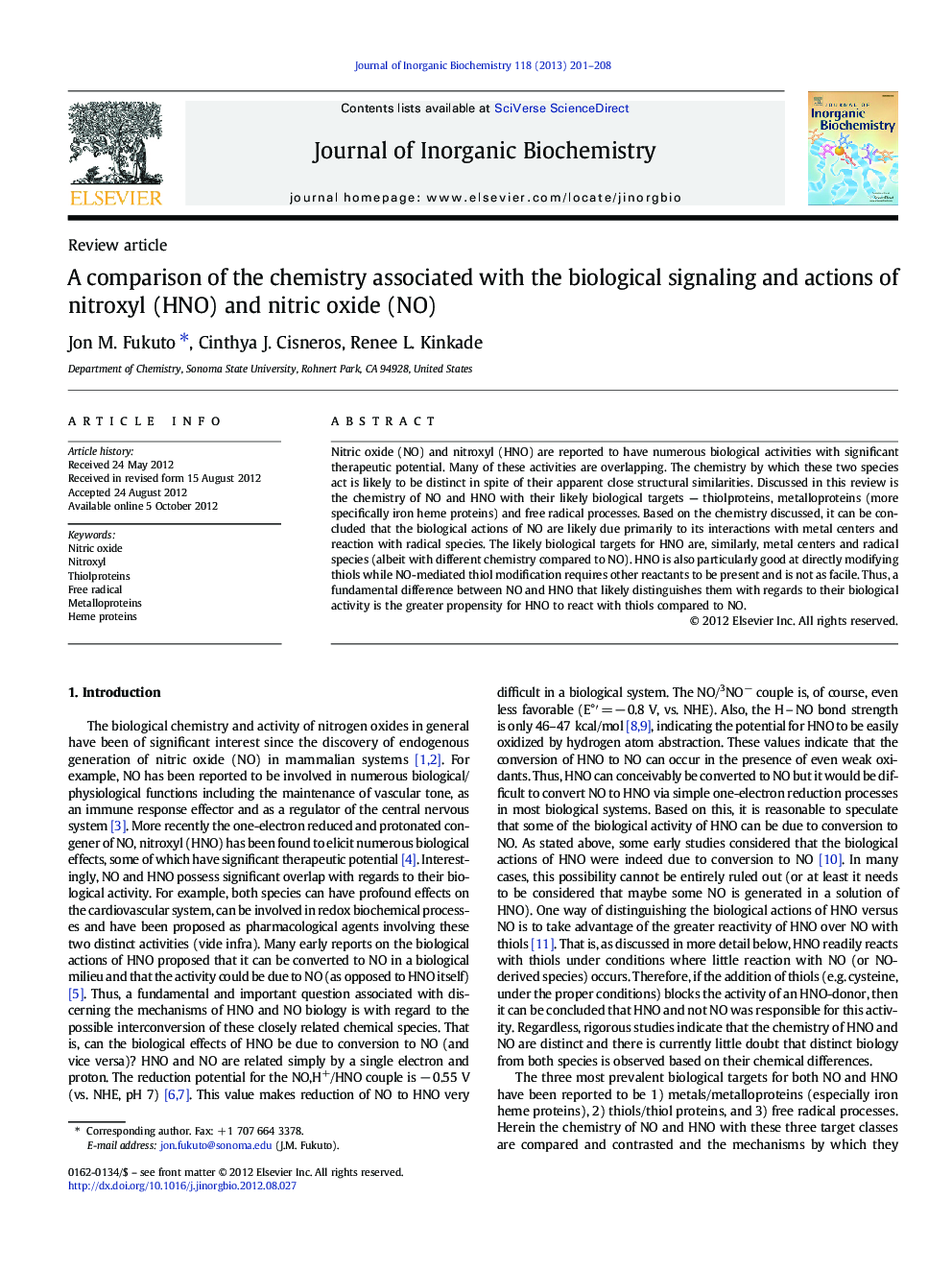| کد مقاله | کد نشریه | سال انتشار | مقاله انگلیسی | نسخه تمام متن |
|---|---|---|---|---|
| 1315923 | 1499469 | 2013 | 8 صفحه PDF | دانلود رایگان |

Nitric oxide (NO) and nitroxyl (HNO) are reported to have numerous biological activities with significant therapeutic potential. Many of these activities are overlapping. The chemistry by which these two species act is likely to be distinct in spite of their apparent close structural similarities. Discussed in this review is the chemistry of NO and HNO with their likely biological targets — thiolproteins, metalloproteins (more specifically iron heme proteins) and free radical processes. Based on the chemistry discussed, it can be concluded that the biological actions of NO are likely due primarily to its interactions with metal centers and reaction with radical species. The likely biological targets for HNO are, similarly, metal centers and radical species (albeit with different chemistry compared to NO). HNO is also particularly good at directly modifying thiols while NO-mediated thiol modification requires other reactants to be present and is not as facile. Thus, a fundamental difference between NO and HNO that likely distinguishes them with regards to their biological activity is the greater propensity for HNO to react with thiols compared to NO.
In biological systems, primary reaction sites for nitric oxide (NO) and nitroxyl (HNO) are thiols, metals and free radical processes. The biological activities of NO and HNO are undoubtedly due to distinct and novel chemistry at these targets.Figure optionsDownload as PowerPoint slideHighlights
► NO and HNO share common biological targets.
► HNO can be oxidized to NO but this is not responsible for all HNO activity.
► NO and HNO react with both ferric and ferrous hemeproteins.
► NO and HNO react with thiols/thiolproteins.
► Both NO and HNO are capable of quenching radical chemistry.
Journal: Journal of Inorganic Biochemistry - Volume 118, January 2013, Pages 201–208